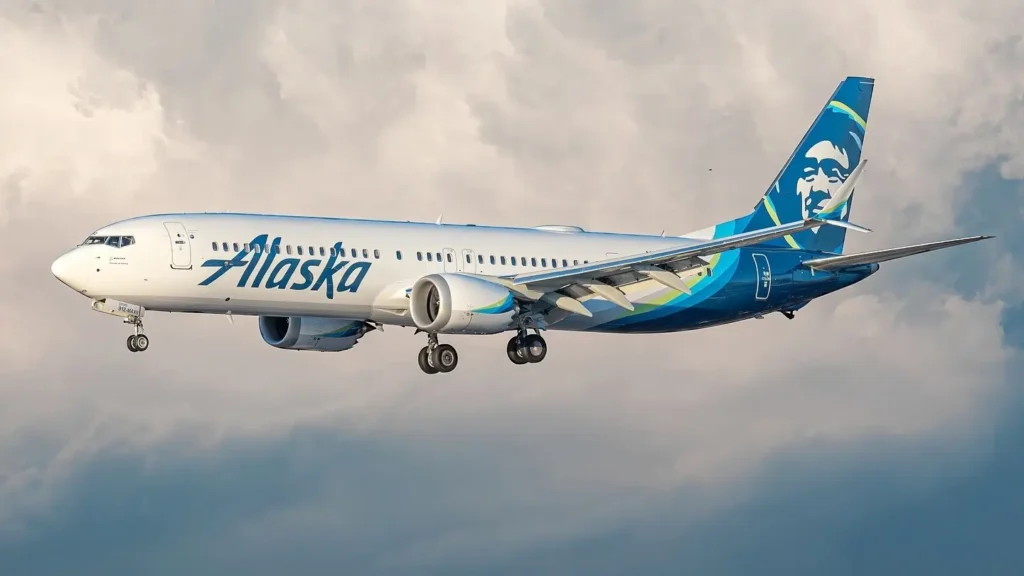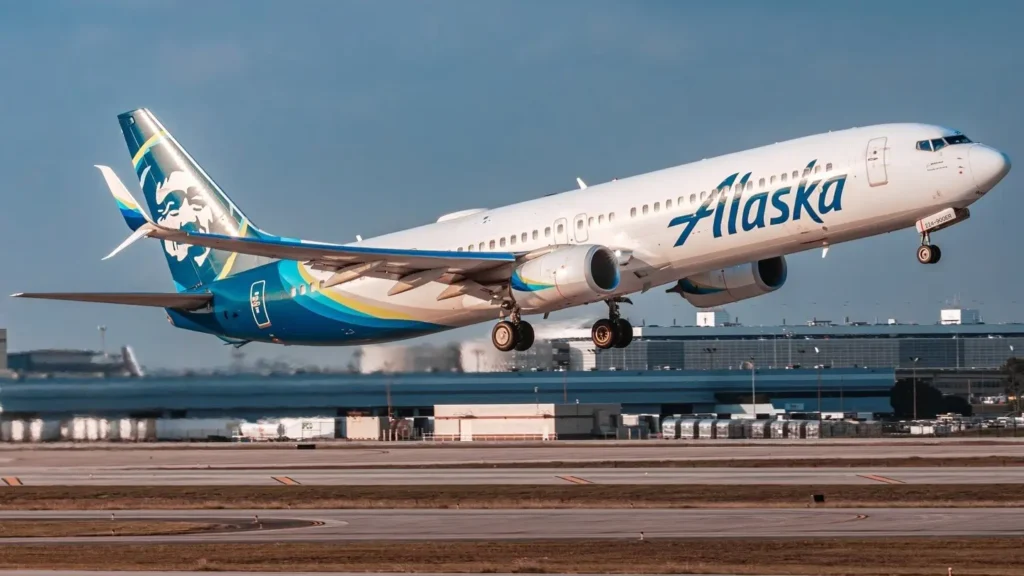SEATTLE- Alaska Airlines grounded its Boeing 737-9 MAX fleet on January 5, 2024, due to a vital door plug that dislodged during Flight 1282. This catastrophe was a watershed moment for the airline, prompting significant operational and safety reforms.
A year later, Alaska Airlines reveals its lessons learned, achievements, and goals to keep safety at the forefront of its operations. Collaboration with Boeing and continuing internal audits have resulted in considerable improvements in production quality and compliance procedures.

Alaska Airlines Safety Reforms
The separation of a door plug during Flight 1282 exposed flaws in manufacture and inspection processes.
Alaska Airlines launched a thorough investigation, investigating Boeing’s production systems and upgrading its monitoring procedures. Key activities include:
Enhanced Internal Audits
Alaska Airlines improved its internal auditing processes by extending its quality and audit teams. These teams now undertake frequent reviews of aircraft maintenance procedures and operational compliance to detect and correct potential flaws.
Streamlined Safety Protocols
New safety management protocols were rolled out across the organization. These include:
- Mandatory pre-flight inspections, with an increased emphasis on high-risk components including door plugs and fuselage seals.
- Integration of powerful diagnostic technologies to track aircraft performance in real time.
- Enhanced reporting procedures enable employees to disclose safety problems without fear of repercussions.
Fleet-Wide Inspections
Following the incident on Flight 1282, Alaska Airlines inspected all 737-9 MAX aircraft across the fleet. This thorough examination identified minor anomalies, all of which were swiftly remedied to ensure compliance with the airline’s stringent safety standards.
Improved Supplier Collaboration
Alaska Airlines worked closely with Boeing and other major suppliers, including Spirit AeroSystems, to oversee component production. The airline actively participates in supplier audits to verify compliance with its safety standards.
Crew Training and Emergency Preparedness
The airline improved crew training programs to better prepare workers for crises. The training now stresses situational awareness, quick decision-making, and enhanced equipment handling to ensure passenger safety in critical situations.
Alaska Airlines increased its involvement in Boeing’s production process by deploying specialized engineers and working with commercial partners such as Ausgael to ensure continual control.
The airline now has engineers on-site at Boeing’s delivery center and conducts seven-day inspections at production sites.
These methods ensure that each aircraft is thoroughly inspected before delivery, underscoring Alaska Airlines’ commitment to safety.
Alaska observed favorable culture adjustments inside Boeing, including an increased emphasis on volunteer safety reporting and work process transparency.

Alaska Airlines’ Next Steps
Alaska Airlines continues to take proactive steps to promote a safety-first culture. Visits to Boeing’s production lines in Renton and Charleston are planned for 2025, with the goal of ensuring continued process improvements.
These initiatives will extend to the Boeing 787 line, demonstrating Alaska’s commitment to maintaining high safety standards across its entire fleet.
Safety is more than a goal; it is a driving philosophy. Alaska Airlines exhibits its steadfast dedication to passenger and crew safety through collaborative partnerships, strict audits, and a continuous improvement culture.
Bottom Line
The Alaska Airlines (AS) Flight 1282 event represented a watershed moment. The airline is reaffirming its commitment to safety and operational performance.
Over the last year, Alaska Airlines has made major adjustments to monitoring, training, and quality control. Alaska Airlines demonstrates its commitment to providing safe, dependable travel by emphasizing continual development and encouraging transparency with partners such as Boeing.
The measures implemented in reaction to this catastrophe provide the groundwork for a stronger, safer future in aviation.













Leave a Reply